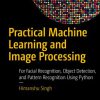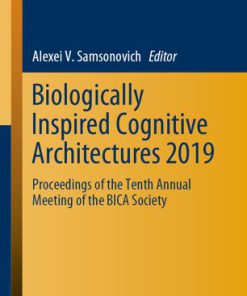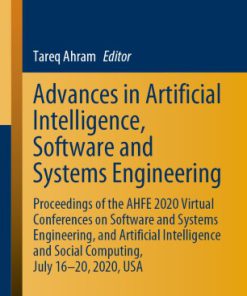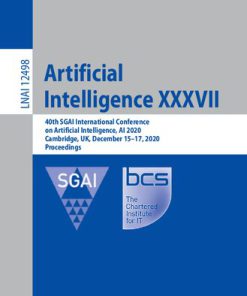Brain-Inspired Cognitive Architectures for Artificial Intelligence: BICA*AI 2020: Proceedings of the 11th Annual Meeting of the BICA Society Alexei V. Samsonovich
$50.00 Original price was: $50.00.$25.00Current price is: $25.00.
This completed downloadable of Brain-Inspired Cognitive Architectures for Artificial Intelligence: BICA*AI 2020: Proceedings of the 11th Annual Meeting of the BICA Society Alexei V. Samsonovich.
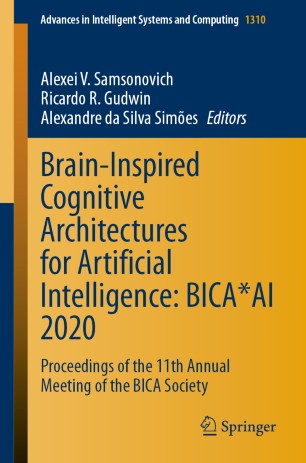
Instant downloaded Brain-Inspired Cognitive Architectures for Artificial Intelligence: BICA*AI 2020: Proceedings of the 11th Annual Meeting of the BICA Society Alexei V. Samsonovich pdf docx epub after payment.
Product details:
- ISBN-10 : 3030655962
- ISBN-13 : 9783030655969
- Author : Aexei V. Samsonovich; Ricardo R. Gudwin; Alexandre da Silva Simões
Table of contents:
Acoustic Pattern Recognition Technology Based on the Viola-Jones Approach for VR and AR Systems
Correlation of a Face Vibroimage Informative Parameters with Characteristics of a Person’s Functional State When Using VR and AR Technical Means
Methodologies and Milestones for the Development of an Ethical Seed
Design of a Transcranial Magnetic Stimulation System with the Implementation of Nanostructured Composites
Application of Information Measuring Systems for Development of Engineering Skills for Cyber-Physical Education
Principles of Design of a Learning Management System for Development of Economic Skills for Nuclear Engineering Education
Post-quantum Group Key Agreement Scheme
Uncanny Robots of Perfection
Self and Other Modelling in Cooperative Resource Gathering with Multi-agent Reinforcement Learning
Eye Movement Correlates of Foreign Language Proficiency in Russian Learners of English
Development of a Laboratory Workshops Management Module as Part of a Learning Support System for the ‘‘Decision-Making Theory’’ Course
Algorithm for Constructing Logical Neural Networks Based on Logical Various-Valued Functions
The Electroencephalogram Based Classification of Internally Pronounced Phonemes
“Loyalty Program” Tool Application in Megaprojects
Using Domain Knowledge for Feature Selection in Neural Network Solution of the Inverse Problem of Magnetotelluric Sounding
Friction Model Identification for Dynamic Modeling of Pneumatic Cylinder
Neurophysiological Features of Neutral and Threatening Visual Stimuli Perception in Patients with Schizophrenia
Logical Circuits of a ΣΠ-Neuron Model
Study of Neurocognitive Mechanisms in the Concealed Information Paradigm
IT-Solutions in Money Laundering/Counter Terrorism Financing Risk Assessment in Commercial Banks
Expandable Digital Functional State Model of Operator for Intelligent Human Factor Reliability Management Systems
Specialized Software Tool for Pattern Recognition of Biological Objects
Designing Software for Risk Assessment Using a Neural Network
Suitability of Object-Role Modeling Diagrams as an Intermediate Model for Ontology Engineering: Testing the Rules for Mapping
Cyber Threats to Information Security in the Digital Economy
Applying a Logical Derivative to Identify Hidden Patterns in the Data Structure
Algorithm for Constructing Logical Operations to Identify Patterns in Data
Graph-Ontology Model of Cognitive-Similar Information Retrieval (on the Requirements Tracing Task Example)
Toward a Building an Ontology of Artefact
Cognitive Architectures of Effective Speech-Language Communication and Prospective Challenges for Neurophysiological Speech Studies
Development of an AI Recommender System to Recommend Concerts Based on Microservice Architecture Using Collaborative and Content-Based Filtering Methods
Visualization of T. Saati Hierarchy Analysis Method
Labor Productivity Growth Based on Revolutionary Technologies as a Factor for Overcoming the Economic Crisis
Network Security Intelligence Centres for Information Security Incident Management
Block Formation for Storing Data on Information Security Incidents for Digital Investigations
Cyber Polygon Site Project in the Framework of the MEPhI Network Security Intelligence Center
Selection of a Friction Model to Take into Account the Impact on the Dynamics and Positioning Accuracy of Drive Systems
Kinematics and Dynamics of the Spider-Robot Mechanism, Motion Optimization
Multiagent Model of Perceptual Space Formation in the Process of Mastering Linguistic Competence
The Role of Gender in the Prosocial Behavior Mechanisms
Reflection Mechanisms of Empathy Processes in Evoked Potentials
Lateralization in Neurosemantics: Are Some Lexical Clusters More Equal Than Others?
Brain Inspiration Is Not Panacea
Linear Systems Theoretic Approach to Interpretation of Spatial and Temporal Weights in Compact CNNs: Monte-Carlo Study
The Economic Cross of the Digital Post-coronavirus Economy (on the Example of Rare Earth Metals Industry)
Comparative Analysis of Methods for Calculating the Interactions Between the Human Brain Regions Based on Resting-State FMRI Data to Build Long-Term Cognitive Architectures
The Use of the Economic Cross Method in IT Modeling of Industrial Development (Using the Example of Two-Component Nuclear Energy)
Intelligence – Consider This and Respond!
Simple Model of Origin of Feeling of Causality
Extending the Intelligence of the Pioneer 2AT Mobile Robot
On the Regularity of the Bias of Throughput Estimates on Traffic Averaging
Virtual Convention Center: A Socially Emotional Online/VR Conference Platform
Ensembling SNNs with STDP Learning on Base of Rate Stabilization for Image Classification
Mathematical Methods for Solving Cognitive Problems in Medical Diagnosis
Brain Cognitive Architectures Mapping for Neurosurgery: Resting-State fMRI and Intraoperative Validation
Machine Learning Based on the Principle of Minimizing Robust Mean Estimates
Parameterized Families of Correctly Functioning Sigma-Pi Neurons
The Loop of Nonverbal Communication Between Human and Virtual Actor: Mapping Between Spaces
Preliminary Experiment on Emotion Detection in Illustrations Using Convolutional Neural Network
AGI Components for Enterprise Management Systems
Eligibility of English Hypernymy Resources for Extracting Knowledge from Natural-Language Texts
The Use of Digital Tools in the Formation of Two-Component Nuclear Energy on the Base of Economic Cross Method
Complex Objects Identification and Analysis Mechanisms
To Help or Not to Help: A Network Modelling Approach to the Bystander Effect
A Model of Top-Down Attentional Control for Visual Search Based on Neurosciences
Comparison of Brain Induced Potentials in Internal Speech in Studied and Unknown Languages
Analysis of Using of Neural Networks for Real-Time Process Control
Comparison Between Coordinated Control and Interpretation Methods for Multi-channel Control of a Mobile Robotic Device
Combinator-as-a-Process for Representing the Information Structure of Deep Computing
Applicative Model to Bring-in Conceptual Envelope for Computational Thinking with Information Processes
Computational Model for Capturing the Interdependencies on Information Processes
Imposing and Superposing the Information Processes over Variable Concepts
Improvement of the Technology of fMRI Experiments in the Concealed Information Paradigm
Modelling Metaplasticity and Memory Reconsolidation During an Eye-Movement Desensitization and Reprocessing Treatment
Correction to: Cyber Polygon Site Project in the Framework of the MEPhI Network Security Intelligence Center
People also search:
are cognitive and intellectual disabilities the same
did brain scans
can you increase cognitive ability
are brains computers
can brain differentiate between reality and imagination
You may also like…
Computers - Computer Science



